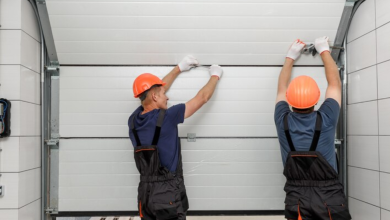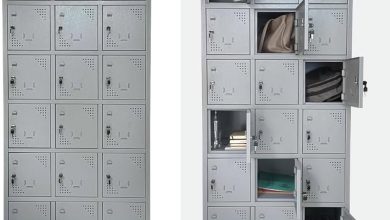Automation Can Help the Food Industry in 4 Ways

Food companies must now supply items promptly and consistently. Those who haven’t End of line packaging automation their packing processes may soon be left behind as demand rises. A food company can boost its efficiency in four ways.
CODE AND LABELING
Food sector precision is vital. Erroneous product tracking and End of line packaging automation necessitate a thorough recall1. A complete product labelling and tracking system reduces the possibility of recall.
Using high-speed date coding, barcodes, and tracking systems helps organisations maintain quality and on-time shipments. Implementing a complete product labelling system can cut annual labelling costs by up to 40% 2.
The greatest method to limit the impact of a recall is to immediately detect and remove problematic products from the market.” O’Brien, Patrick, RMH Systems Packaging
Thermal printers often include scales to save space and time. Weighing products while labelling simplifies the packaging process. Being able to handle two activities at once is a wise step for firms wanting to increase output.
With growing production demand, avoiding recalls and delivering on time is vital to any company’s cash flow. Ensures quality, safety, and protects food supply chains and margins.
Wrapped in Stretch
Stretch wrapping automation saves money. Produce companies who move from semi-automatic to fully-automatic stretch wrapping save approximately $29,000 in labour expenditures alone over five years. Switching from manual to automation saves hundreds of thousands. Employees can save two minutes every load by not manually attaching and cutting stretch film3. Using a stretch wrapper with a built-in scale saves $21,000 over five years and an additional minute and a half every load.
A factory’s floor is worth money. Unlike human wrapping systems, automated stretch wrapping solutions have a single footprint. This single footprint frees up previously occupied space. A second stretch wrapper could fit here.
Automating stretch wrapping can help food companies enhance quality assurance. By automating this procedure, firms may expect uniformly wrapped pallets.
Palletizing
The cost of robot labour for two shifts is anticipated to be $2-$3 per hour4. This is far less than any domestic low-cost region’s labour cost.
Businesses can save over $120,000 annually by palletizing5. The ROI of robotic automation is becoming easier to achieve. Many sections of the country are experiencing serious labour shortages; robotics offer a reliable solution. Robots eliminate workplace injuries by removing employees from risky activities. Robotic automation does not eliminate jobs, but rather shifts employees into higher-value professions.
Quality is one of the first objectives to deteriorate in manual processes as demand grows. Robotic palletizing offers reliable, uniform quality. Robotic palletizers provide consistent pallets and eliminate pallet stacking difficulties.
Securing the Case
Autonomous case forming and sealing systems Case sealers ensure that each case is correctly closed. Incorrectly sealed cases can harm or destroy a food producer’s shipment, affecting their bottom line.
Case forming and sealing technologies reduce time and boost safety by automating simple tasks. Case forming technologies boost box production from 4-5 to 12-35 per minute. 6. These methods allow you to repurpose human labour from mundane tasks like box assembly to more productive tasks. Case formers also assure a precise case every time, preventing inconsistent packages.
Case forming and sealing mechanisms that operate on their own Case sealers are responsible for ensuring that each case is properly closed. Incorrectly sealed cases can cause damage or destruction to a food producer’s shipment, which can have a negative impact on their bottom line.
Case forming and sealing technologies, which automate simple processes, save time and increase safety at the same time. Case forming technologies increase box production End of line packaging automation from 4-5 to 12-35 boxes per minute as a result of their efficiency. 6. You can repurpose human labor from monotonous chores such as box assembly to more productive duties by using these strategies. Case formers also ensure that a specific case is use each and every time, preventing inconsistent packages from being create.
Choosing the correct case sealing line for your business is crucial. On-site or off-site case sealing solutions are available, whether glued or taped.
These are just a few ways food firms can enhance efficiency and output. This equipment can be designed and incorporated into a fully integrated packaging system Zebra partner built for uptime, safety, quality, and ROI. Do you want to automate your packaging?




